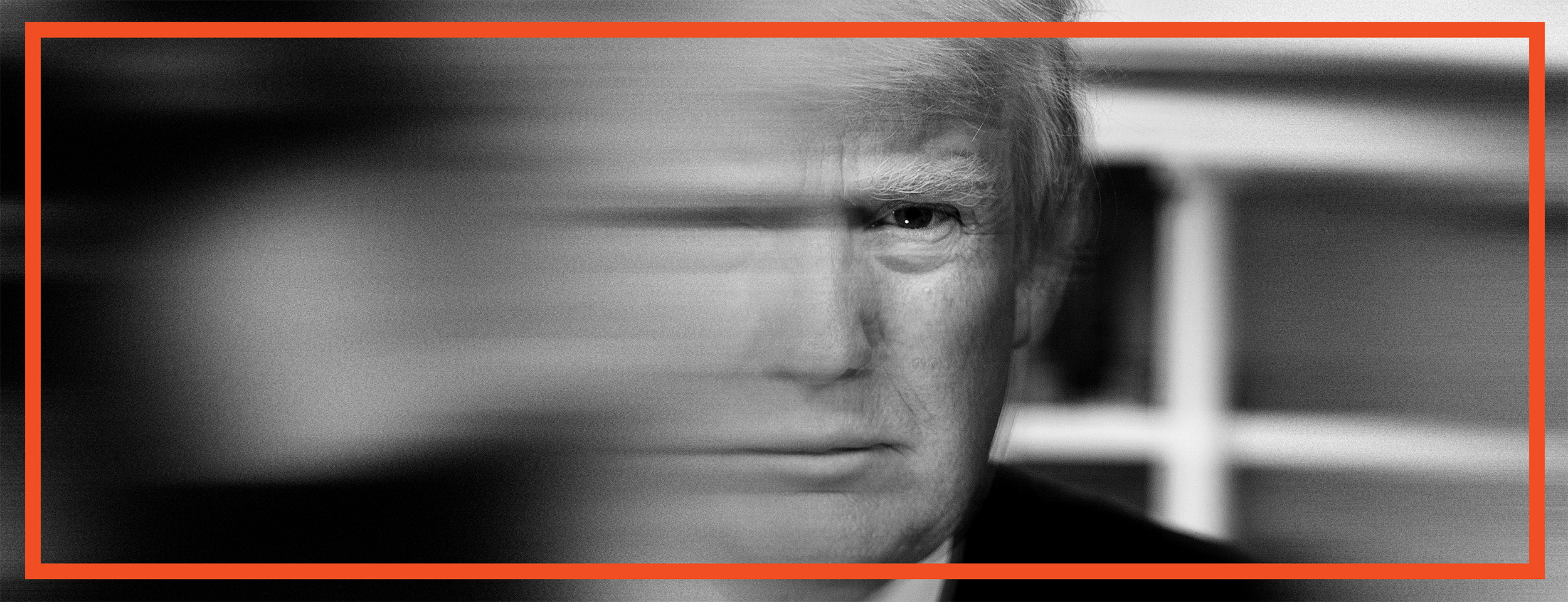In November 2017, the International Center for Journalists gave Fox News’s Chris Wallace an award for excellence in journalism. In his acceptance speech, he noted that President Trump’s attacks on the media threaten democracy, but then pivoted to scold his peers. “Even if Trump is trying to undermine the press for his own calculated reasons,” Wallace said, “when he talks about bias in the media—unfairness—I think he has a point.”
Wallace listed examples of recent Trump coverage that had made him uncomfortable: a CBS Evening News intro referring to “presidential statements divorced from reality”; a tweet from a New York Times reporter asking, “Would you keep working for a boss who consistently refuses to distance himself from virulent racists, anti-Semites, and white supremacists?” Wallace warned that journalists should approach their work as “umpires… objective witnesses to what is going on.” He added, “We shouldn’t be drawn into becoming players on the field, trying to match the people we cover in invective. It’s not our role.”
Wallace’s basic philosophy of journalism, while clearly alien to many of his colleagues at Fox, matches that of senior figures across the media industry: from the editors of major newspapers who fear being seen as part of an anti-Trump “Resistance,” to the veteran journalists who take impartiality so seriously that they don’t even vote. After Trump won, many outlets touted this philosophy as a badge of honor, as well as a means of selling subscriptions. “We’re not at war; we’re at work,” Marty Baron, the executive editor of the Washington Post, said, repeatedly. “This is an apple,” CNN said, promising “facts first.”
As Trump’s first or only term winds down, this view of journalism has never looked creakier, or more deficient. Journalists in newsrooms across America are assailing the old notion of “objectivity” as morally inadequate: calling Trump a friend of “virulent racists” isn’t invective but a truth that must be told. For his part, Trump has ruthlessly gamed old-school journalists’ commitment to covering “both sides” of the story, winning more than equal time for his lies, as well as “he said, she said” fig leaves for his obscene behavior.
Since 2017, we have, between us, observed these failures in real time—tracking the coverage of almost every day of Trump’s presidency for CJR’s daily newsletter, The Media Today. (Pete wrote the newsletter until October 2018, when Jon took over; our colleagues Nausicaa Renner and then Mathew Ingram wrote it once a week throughout, mostly on the intersection of journalism and tech.) With the election approaching, we looked back at every one of our newsletters to remind ourselves of the debates, narratives, and missteps that have defined the Trump presidency.
Our observations, while rooted in the record we kept over time, are inevitably impressionistic. We’ve seen much outstanding political reporting—the New York Times on Trump’s taxes; the Washington Post unmasking a Project Veritas sting; the great beat reporting that helped bring down Tom Price, Scott Pruitt, and Ryan Zinke—and astute, clear-eyed columns and essays (“The first white president”; “The cruelty is the point”) that stand as exceptions to the general malign trends that are our focus here. (Nor, at the other extreme, are we much concerned with the right-wing mediasphere: a crucial story of the Trump presidency that has been well-documented elsewhere.)
Nonetheless, the act of bringing together our daily doses of media criticism paints a clear picture of an industry whose basic practices and rhythms have conspired, time and again, to downplay demagoguery, let Trump and his defenders off the hook, and drain resources and attention from crucial longer-term storylines. Much has changed since Inauguration Day, both in the news and the media’s approach to covering it. But in other ways, many of them profoundly important and consequential, the press has simply not learned its lesson.
Last month, Wallace moderated the first presidential debate between Trump and Joe Biden, in Cleveland. Ahead of time, Wallace stressed again that he would be an umpire, not a player; the moderator’s job shouldn’t be to fact check candidates, he said, but to stay “as invisible as possible.” The debate was a train wreck—Trump lied, attacked, and interrupted his way through it, and Wallace ended up, as The Atlantic put it, “roadkill.” Afterward, in an interview with the Times, he seemed at a loss. “I guess I didn’t realize—and there was no way you could, hindsight being twenty/twenty—that this was going to be the president’s strategy,” he said.
“I’ve been involved in a certain amount of soul-searching,” he added. “Generally speaking, I did as well as I could, so I don’t have any second thoughts there. I’m just disappointed with the results.”
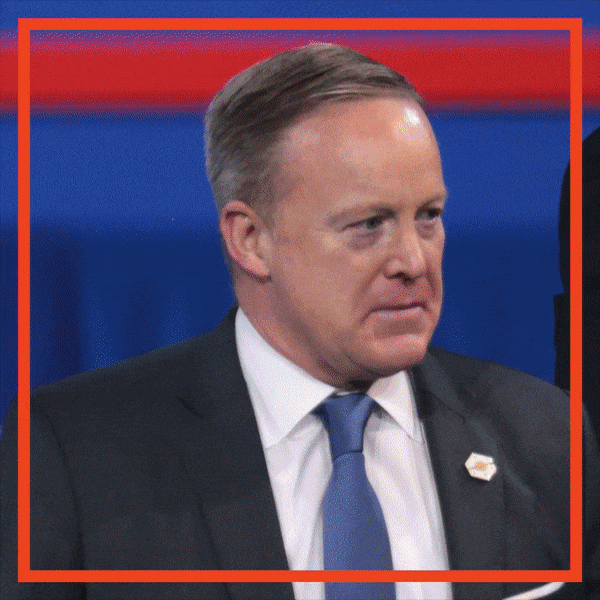
For journalists, the Trump presidency dawned with an understanding that it would not be business as usual. “We shouldn’t view it as a normal White House,” Peter Baker, chief White House correspondent at the Times, told CJR in January 2017. “It’s going to be a very different type of climate.” In the days leading up to the inauguration, Trump berated journalists at a contentious press conference; the Society of Professional Journalists sent a concerned, if hopeful, letter to the president-elect, pleading for transparency and press freedoms; and CJR optimistically observed that “the general tenor of media coverage is trending toward a healthy skepticism of executive power and official sources that has been lacking over a generation of insider-centric reporting.” Major outlets prepared for the expected flood of news by pouring resources into their Washington bureaus. But no amount of planning could have prepared the press for what was to come.
“If we go silent from time to time, we’re just doing what you’re doing,” MSNBC’s Brian Williams told viewers during the inauguration. “It’s a lot to take in.” Within forty-eight hours, Trump’s first press secretary, Sean Spicer, had set the tone for his (and his successors’) antagonistic relationship with the press corps by blatantly lying about the inaugural crowd size, and the senior adviser Kellyanne Conway had coined a phrase—“Alternative Facts”—that would come to define the administration’s relationship with the truth.
Journalists reported on the president’s moods, his television habits, his aides’ personalities and infighting; they expressed anguish over the uselessness of press briefings, and then lamented their absence. Editors dispatched journalists to “Trumplandia” to find understanding in the diners of Rust-Belt towns, and sometimes even allowed right-wing internet trolls (when not quoting them) to dictate personnel decisions. Trump’s tweets set hamster wheels spinning in newsrooms, often dictating the agenda for the day’s coverage. After Reince Priebus, Trump’s first chief of staff, proved unable to control his boss, some thought that maybe John Kelly would “save Trump’s soul.” Kelly did, at least, save us from Anthony Scaramucci, whose eleven days as White House communications director triggered more media stories (“I’m not Steve Bannon, I’m not trying to suck my own cock”) than many administration staffers manage in four years.
Then, in August, the mood darkened. Neo-Nazis descended on Charlottesville, Virginia. One of them killed Heather Heyer, an anti-racist protester, with his car. Trump said there were “very fine people” on both sides. “The sickening images that emerged from Charlottesville herald that some moment has arrived,” Jelani Cobb wrote, in the New Yorker. “The breach that Trump has courted since he first emerged in public life has become apparent; it is more deadly and its architects more emboldened. What happened in Virginia was not the culminating battle of this conflict. It’s likely a tragic preface to more of the same.” His prediction was depressingly prescient.
For the press, entering a new moment required putting an end to profiles of so-called alt-right thought leaders, like Richard Spencer, and instead respecting the far right as a distinct beat, to be covered with care. Some progress has been made on that front. But there has, too often, been more of the same. In November 2017, the Times ran a much-criticized profile of an Ohio neo-Nazi who, just like other humans, eats food and likes Seinfeld. As we wrote at the time, the piece was heavy on banality, but failed to capture the evil that its subject didn’t even try to conceal.
Those final days of the summer of 2017 marked a chance for the media to step back and reckon not only with systemic racism and white supremacy, but with the realities of the man in the White House and the actions he inspires. Seven months into his administration, it was clear that the president was unwilling or unable to change. It was obvious who he was.
Or it should have been. Instead, news organizations continued to fret over whether to call his untruths “lies” since we can’t see inside his head. (While the Times deployed the L-word, albeit sparingly, during the campaign and Trump’s first days in office, the Post only used it for the first time in August 2018 even though, by that point, the paper’s fact checkers had already compiled more than four-thousand “false or misleading” Trump claims since he took office. The total passed twenty-thousand in July of this year.) Some journalists and pundits still believed that Donald Trump might “pivot,” change his tone, rise to the moment, and earn that elusive, normalizing label: “presidential.” Writing to mark the one-year anniversary of Trump’s election, Margaret Sullivan, the closely-watched media critic at the Post, credited some dogged reporting, but judged that, overall, “the reality-based press has failed.”
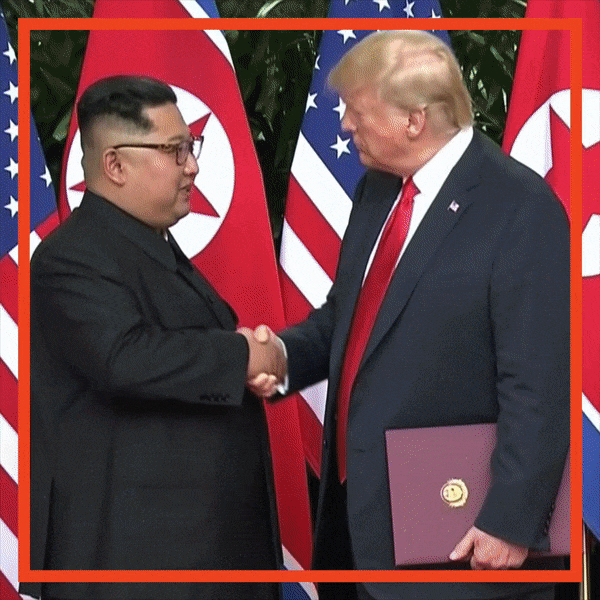
In hindsight, the pace of that first year of the Trump presidency looks almost quaint; since then, the news cycle has only accelerated. The fire and fury of Michael Wolff’s gossipy book scandalized everyone until it didn’t (especially after Wolff’s reliability as a narrator came into question). The comedian Michelle Wolf excoriated gossipy books, the press, and the administration’s lies, and in the process scandalized Spicer’s replacement, Sarah Huckabee Sanders, and the pearl-clutching journalists who leapt to Sanders’s defense. The pageantry of Trump’s historic summit with Kim Jong-un gave way to shocking images—and audio—of detention camps at the southern border and children separated from their families, which gave way to Brett Kavanaugh’s nomination to the Supreme Court and the sexual assault allegations against him. Trump foisted xenophobic lies upon the press in advance of the mid-term elections, then shut down the government to get wall funding, then met with Kim again in the hope of creating “irresistible” TV. Along the way, mononyms—Oprah, Omarosa, Avenatti—flitted in and out of the narrative. Controversy around one of them, Roseanne, crowded out reporting on the death toll from Hurricane Maria, in Puerto Rico.
There is perhaps no better example of this acceleration than the news cycle surrounding Robert Mueller’s report on the Trump campaign’s ties to Russia and the president’s attempts to obstruct Mueller’s investigation. From his appointment as special counsel in May 2017 through the early part of 2019, Mueller worked slowly and in silence; the void was filled with some outstanding reporting—especially by the Times and the Post, whose every scoop seemed to raise the stakes on their last—but also by interminable bloviating on the part of a Mueller-industrial complex of cable-news prosecutors and pundits. In the spring of 2019, viewers heard numerous times over a period of several weeks that the report was “imminent,” but the story dragged on for four more months—through the release of the report and Mueller testifying before Congress.
Contrary to the apparent hopes of many pundits, Trump was never impeached over Mueller’s findings. In December 2019, he was impeached, for his corrupt pressure campaign against Volodymyr Zelensky, the president of Ukraine. This time, the entire story unfolded in a little over four months—from late September, when the public learned of a whistleblower complaint targeting Trump, through early February, when the Senate acquitted him.
By that point, the first cases of COVID-19 had been reported on US soil. Ever since, we have all been living through an even bigger avalanche of news, with one history-making moment tumbling after the next, all of them intertwined: 1,000 confirmed COVID deaths by March; 10,000 confirmed COVID deaths by April; the police killing of George Floyd, on Memorial Day; 100,000 confirmed COVID deaths two days later; a summer of protests centered on Floyd, Breonna Taylor, and other murdered Black Americans; the tear-gassing of peaceful protesters in DC; the death of John Lewis; the snatching of peaceful protesters in Portland, Oregon; the death of Ruth Bader Ginsburg, on September 18; 200,000 confirmed COVID deaths four days later; and Trump’s own COVID diagnosis and hospitalization—all against the backdrop of an election that Trump cast, with mainstream media help, as rigged.
At times, news outlets demonstrated an ability to slow down the news cycle and focus on stories that were, on their face, not about Trump. The fallout from intrepid reporting, in the Times and the New Yorker, on Harvey Weinstein captured the media cycle for months, with powerful men across numerous industries exposed for their abusive behavior. Similarly, the gun-control activism of students from Marjory Stoneman Douglas High School in Parkland, Florida—where a shooter killed seventeen people on Valentine’s Day 2018—drew sustained attention to a crisis that often fades from the headlines just days after the most recent tragedy.
While not about Trump per se, these stories were what we called “Trump-adjacent”—fueled, to some extent, by anger about his long history of alleged sexual assault and his harmful policies. The press as a whole was never quite able to make those links explicit enough, and Trump avoided accountability. When the advice columnist E. Jean Carroll accused him of rape, the story was woefully undercovered (at one point the following day, it did not feature among the 164 stories on the Times’s homepage); when Amy Dorris, a former model, accused Trump of sexually assaulting her at the US Open in 1997, her story, too, got pitifully little attention, coming in the same week as at least four other scandalous allegations about Trump and his administration. Meanwhile, shootings post-Parkland—in Santa Fe, Pittsburgh, Poway, Virginia Beach, Gilroy, Midland, and elsewhere—swelled as stories, then quickly faded. Near-simultaneous massacres in El Paso and Dayton focused attention enough that Trump pledged gun reform. But his pledge quickly proved worthless, and the press never meaningfully held him to it.
As the pace of the news cycle grew ever faster, the media’s ability to sustain attention on important matters wilted. Journalists and their editors could have fought back against this by emphasizing the linkages between big stories, and thus covering them at once—gun violence and systemic racism; systemic racism and the coronavirus; the coronavirus and climate change—but the siloed nature of the news cycle cut against this time and again. The acceleration of the news—and its frequent plumbing of new depths of scandal and misery—also damaged our ability to establish a sense of proportion around Trump’s misdeeds. As we wrote in June, after Trump violently cleared protesters from Lafayette Square to do a photo op with a Bible, “Each new low demands to be covered with an unerring spotlight, but as the new lows pile up, the spotlight necessarily has to widen, to a point where it’s no longer adequately illuminating.”
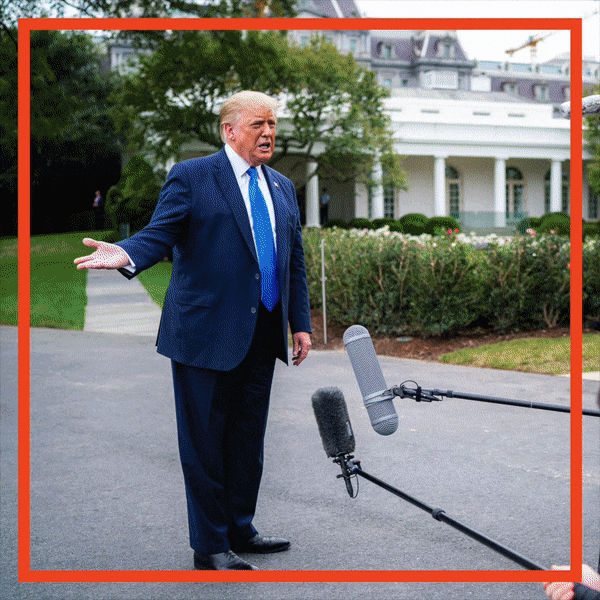
Especially since the start of the pandemic, the tenor of coverage feels much changed. But many problems have persisted—in particular, those that involve clinging to halcyon notions of bipartisanship and public service, and attendant, routine framing errors that have blurred lines of accountability around Trump and his administration.
Coverage, especially in the first part of Trump’s presidency, often hearkened back to a mythic golden age of political civility—after Sanders was booted out of a Virginia restaurant, for instance, or after Alan Dershowitz said he’d been shunned on Martha’s Vineyard for arguing against Trump’s impeachment. The deaths of John McCain and George H.W. Bush, which both met with saccharine displays of public hagiography, became metaphors for lost decency.
Some commentators have credited Trump whenever he has met the basic standards of his office, especially when a teleprompter has been involved. On the night that he delivered his first joint address to Congress, in February 2017, CNN’s Van Jones said that Donald Trump “became president.” (For Jones’s colleague Fareed Zakaria, Trump “became president” five weeks later, after approving a missile strike on Syria.) After Trump’s 2018 State of the Union, a Times headline heralded his “appeal for unity,” while the Post touted “a call for bipartisanship.” (Both headlines were later changed.) After the 2020 edition of the address, the Times noted the “reality show flourishes” of the speech, and CNN wrote that, “if elections are won by defiant showmanship alone, Donald Trump, the grand political illusionist, will waltz to a second term.” In March, after Trump got through a coronavirus briefing without telling viewers to inject Clorox, CNN’s Dana Bash said he was behaving like “the kind of leader that people need, at least in tone.” After a briefing in July, outlets across the mediasphere hailed a “new tone” again—even though Trump used the briefing to rail against the “China virus” and send his good wishes to an accused child sex trafficker.
Then there’s the obsession with optics. When Mueller testified before Congress in July 2019, many reporters and pundits judged his performance a flop—and even insinuated that he had gone senile—because he failed to dramatize the findings of his report in a compelling way; in fact, that was always the media’s job, not Mueller’s. The hearings in Trump’s impeachment were graded on entertainment grounds, too.
Unlike with the Mueller probe, the central facts of the impeachment process were bumper-sticker clear: Trump asked Zelensky to investigate a political rival and then openly admitted to doing as much, first in a published record of the call, then in a conversation with reporters on the White House driveway. Yet rather than center that damning factual clarity, much subsequent coverage, especially on TV, muddied it—privileging “new” information even if it wasn’t as consequential as Trump’s original admission; fussing over the static state of opinion polls without stressing how consistently bad they were for Trump; and inviting Republicans to launder flagrantly dishonest talking points, then characterizing them as part of a “partisan brawl” for which “both sides” were responsible. A journalistic culture accustomed to prizing damning secrets from manila envelopes in parking garages still hadn’t figured out how to respond proportionately to a president of the United States saying the most damning stuff out loud, on TV and online, day after day.
Debates about the utility of giving airtime to Trump’s surrogates still haven’t resulted in any real changes to the practice. Reporters have continued to allow administration officials to launder lies and prosecute grudges—against Dr. Anthony Fauci, for instance—under the cover of anonymity. Many stories still use impersonal language—like talking about the failures of “Congress” when what is meant is “the Republican Party”—as an instinctive crutch. And euphemisms still abound, nowhere more so than in coverage of Trump’s racism.
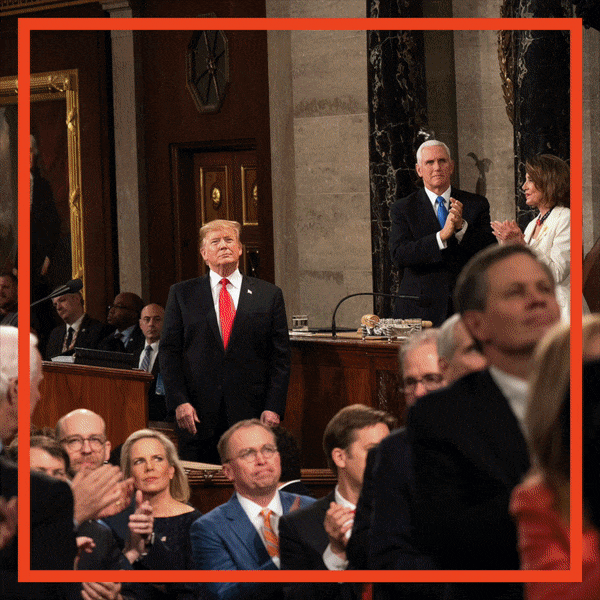
In July 2019, after Trump tweeted that four Democratic Congresswomen of color (all bar one of whom were born in the US) should “go back” to “the totally broken and crime infested places they came from,” his remarks were described, variously, as “racially infused,” “racially charged,” and responsible for “fanning the flames of a racial fire.” The language was so tortured that the Daily Show created a “Trump Racist Euphemism Headline Generator” to parody it. (“Trump strolls along banks of eyebrow-raising racial misadventure.”) Later in the week, major outlets assessed the racism through the distorting lens of campaign strategy. (HuffPost did a better job with its dispatch from “a fascist Trump rally in Greenville.”)
The following month, a gunman posted an online screed stuffed with racist rhetoric, then murdered twenty-three people, the vast majority of them Hispanic, in El Paso. Two days later, Trump addressed the shooting in a speech at the White House, which the Times covered under the print headline (later changed) of “Trump urges unity vs. racism.” Dean Baquet, the paper’s executive editor, would later acknowledge that the wording was “a fucking mess.” It wouldn’t be the last desperately-credulous Times headline: in June 2020, Trump threatened to deploy the military domestically, and the Times wrote, “As chaos spreads, Trump vows to ‘end it now.’” The next day, the same paper’s opinion section published an op-ed in which Tom Cotton, a Republican senator, called on Trump to “send in the troops”; the backlash, from Times staffers of color, and their internal and external allies, triggered the departure of James Bennet, the editorial page editor. A few weeks later, Trump gave a deranged July 4 speech that was met with tame charges of “divisiveness” across much of the press.
This summer, following the police killings of Floyd, Taylor, and other Black Americans, journalists of color catalyzed a fresh conversation about race and diversity within major newsrooms, including around the concept of objectivity and its derivation from the white, male gaze. “‘Objective journalism’ is constructed atop a pyramid of subjective decision-making: which stories to cover, how intensely to cover those stories, which sources to seek out and include, which pieces of information are highlighted and which are downplayed,” Wesley Lowery wrote in an op-ed for the Times. “No journalistic process is objective.” This conversation was about a great deal more than Trump, but it was also about Trump—a response not just to inadequate coverage of his racism, but to an amoral approach to political journalism generally that helped facilitate his rise.
Some newsrooms did, indeed, make overdue personnel changes, and promise to further improve internal diversity; for a time, it felt as if the edifices of the old journalistic philosophy were cracking. One place where a shift has happened is in sports media, where the “stick to sports” hand-wringing that characterized coverage of Colin Kaepernick kneeling for the anthem has given way to a greater understanding, in 2020, that the two topics are inextricably linked—though Jemele Hill lost her job at ESPN and the world lost the entire staff of Deadspin along the way.
But as summer turned to fall, the conversation had, in many places, moved on, as so many Trump-era conversations do. It left behind unfinished progress, at best. If Trump leaves office and the news cycle settles down, we’ll have a better idea as to whether the calls for a new approach had lasting resonance at the industry’s highest levels, or were merely acknowledged, then quietly discounted as yet another outraged reaction to a news cycle full of disquiet.
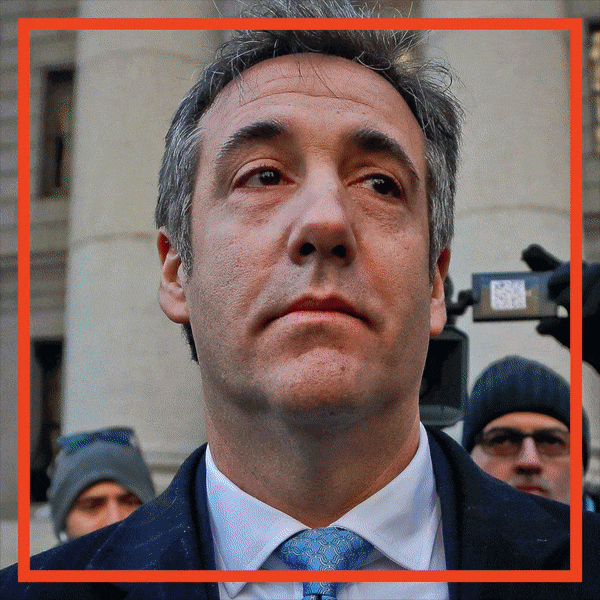
The media’s response to the Trump presidency has been marked, perhaps above all, by an obsession with Trump. His ability to act as the press’s assignment editor—be it by design or accident of his erratic personality (and there are strong opinions on both sides of that debate)—remains undimmed.
Sure, the news cycle reacts with less intensity, these days, to his every tweet and insult, and it’s true that for all the attention that it lavishes on him, he routinely says and does things that would trigger a month of controversy under any other president, yet pass mostly without comment. For every outrage that got normalized, however, Trump served up a fresher, zanier controversy to chew on. (Remember the Putin summit? Remember Sharpiegate?) His nicknames continue to amuse reporters to death; when his moniker for Biden (“Sleepy Joe”) failed to land, many pundits sounded almost disappointed. The media’s (and, judging by sales figures, the public’s) appetite for insidery books—by Mary Trump, by John Bolton, by Michael Cohen—has held steady, even though the appalling anecdotes in each one were quickly lost to the wind. Ditto insidery news stories.
Such books and stories have, more often than not, been useful contributions to a detailed, real-time historical record. Ultimately, though, none of us needed them to know who Trump is: for a man who lies so prolifically, he is himself a remarkably open book. When Bob Woodward released his latest Trump chronicle, Rage, a, well, outraged media latched onto Trump’s admission to Woodward—way back in February, when he was downplaying the coronavirus publicly—that COVID-19 would likely be very bad. Again, this was an important detail for posterity. But it didn’t fundamentally change what we already knew about Trump’s pandemic response: that whatever he said privately, he did nothing.
Not only has the Trump obsession often drowned out bigger stories—crises like climate change, racism, immigration, anti-trans discrimination, inadequate healthcare, poverty, and gun violence, all of which predated Trump and will outlast him—it has forced us to see them, when we see them at all, through the distorting, flattening lens of the man himself. A not-insignificant portion of the punditocracy, in particular, seems to believe that America’s problems—the biggest ones, anyway—begin and end with Trump’s tenure in office. Many reporters seem to believe that, too, if less overtly. The truth, of course, is that the systemic problems that Trump came to personify were here before he arrived and will last long after he’s gone; he was simply their embodiment. Journalism’s failure to consistently grasp that difficult, fundamental fact means that laying the groundwork for a meaningful reckoning with these last four years may continue to be pushed off into the future.
Some journalists, of course, will undoubtedly have been awakened under Trump. Others never needed awakening. If Trump loses the election and leaves office in January, will these voices grab hold of the media conversation, insisting that we can’t go back to the complacency of business as usual? Or will a Joe Biden presidency—and its anticipated restoration of “norms” and “decency” and institutional weight—drain the news cycle of its present urgency, and usher in a new golden age of Washington schmoozing, and “girls’ nights,” and triviality?
Will the brilliant investigative scoops of the Trump presidency—already the preserve of papers that can afford to invest in them—inspire a new golden age of muckraking? Or will they dwindle if future administrations prove less overtly tumultuous? Will the Trump cabal, in the administration, media, and politics, be held to account for what they did? Or will the calls to “move on” prevail? When a future president—Biden or someone else—threatens to drag the US into a foreign war with no demonstrable evidence, will otherwise-hawkish cable pundits think twice, as many of them did in January, after Trump assassinated Iran’s top general, Qassem Suleimani? Or will they insist that we shouldn’t be concerned, because of the new president’s temperament and qualifications? (Last year, one of the great undercovered stories of recent times, the Post’s “Afghanistan Papers,” reminded us that presidents of all stripes tend to lie about war.) Will we go back to an era when politicians can convince the bulk of the media to give them an easy ride so long as they pay lip service to the shibboleths of the political establishment?
In researching this piece, we found that one media failure resonated more than most—and Trump wasn’t even its central character. Rather, it concerns William Barr, the attorney general who, since his confirmation last year, has become one of—if not the—most consequential figures in Trump’s Washington. Not only did he play a central role in a string of Trump’s most egregious acts—the pre-publication spinning of the Mueller report; the lighter sentence (eventually commuted) for Trump pal Roger Stone; the decision to drop charges against Michael Flynn, Trump’s first national security adviser; the ousting of pesky prosecutors; the disinformation campaign against mail-in voting—but he also bent the norms of justice, and this country’s relationship with executive power, to the president’s will in ways that will prove hard to undo and easier to replicate, should a future attorney general be so inclined.
We could have seen all this coming. Barr has a longstanding view of extreme executive authority; was involved in numerous questionable power plays as George H.W. Bush’s attorney general, in the nineties; and, prior to assuming oversight of the Mueller probe, made troubling noises about its legitimacy, both publicly and in an unsolicited memo he sent to the Justice Department. Indeed, much coverage of Barr’s nomination and confirmation hearing noted these facts. But they didn’t penetrate a broader narrative: that Barr—the Washington stalwart, the reputable corporate lawyer, the independent-minded old hand, the friend of “Bob” Mueller—was, as one pundit put it, a “principled institutionalist,” especially compared to his overtly-Trumpian predecessor, Matthew Whitaker.
That Barr ended up shocking so much of the press is a reflection of a great many of the media pathologies that have hamstrung our coverage of the Trump presidency. These four years have been so jarring—and there are enough visible, particularly young, reporters and commentators out there who get that—that there’s reason to hope these pathologies die with Trump. Given what we know, though, about the currencies of political reporting, and the racial and class composition of major news organizations, and our tendency to forget even the recent past, there’s also grounds for pessimism.
In May of this year, after the Justice Department moved to drop charges against Flynn, to widespread outrage, Barr sat for an interview with Catherine Herridge, of CBS News, in a bid to explain himself. At one point, Herridge asked Barr how he thought history would judge his decision. “Well,” Barr replied. “History is written by the winner.” Looking back on our first draft of the last four years of history, it’s hard to conclude that we are the winners.
Jon Allsop and Pete Vernon are the authors. Jon Allsop is a freelance journalist. He writes CJR’s newsletter The Media Today. Pete Vernon is a freelance journalist and former author of The Media Today.


